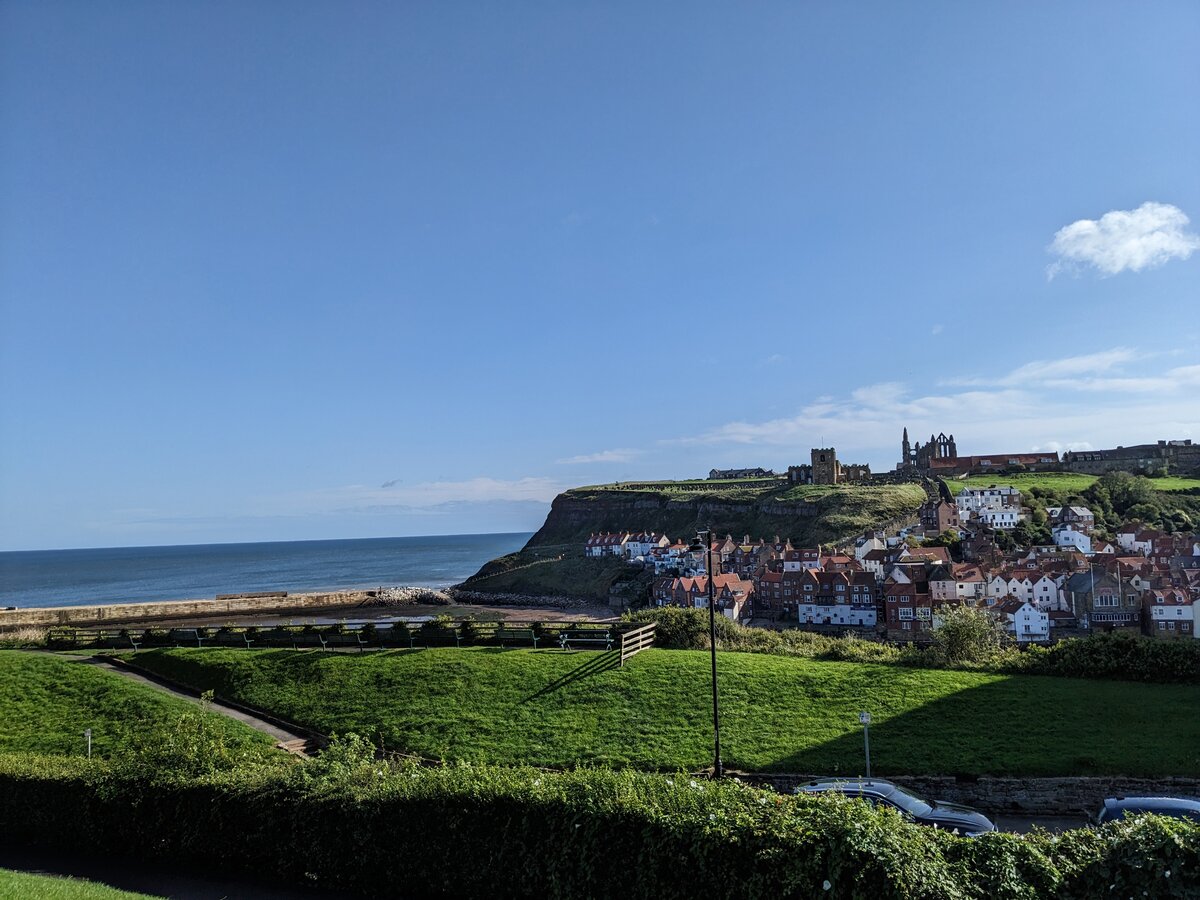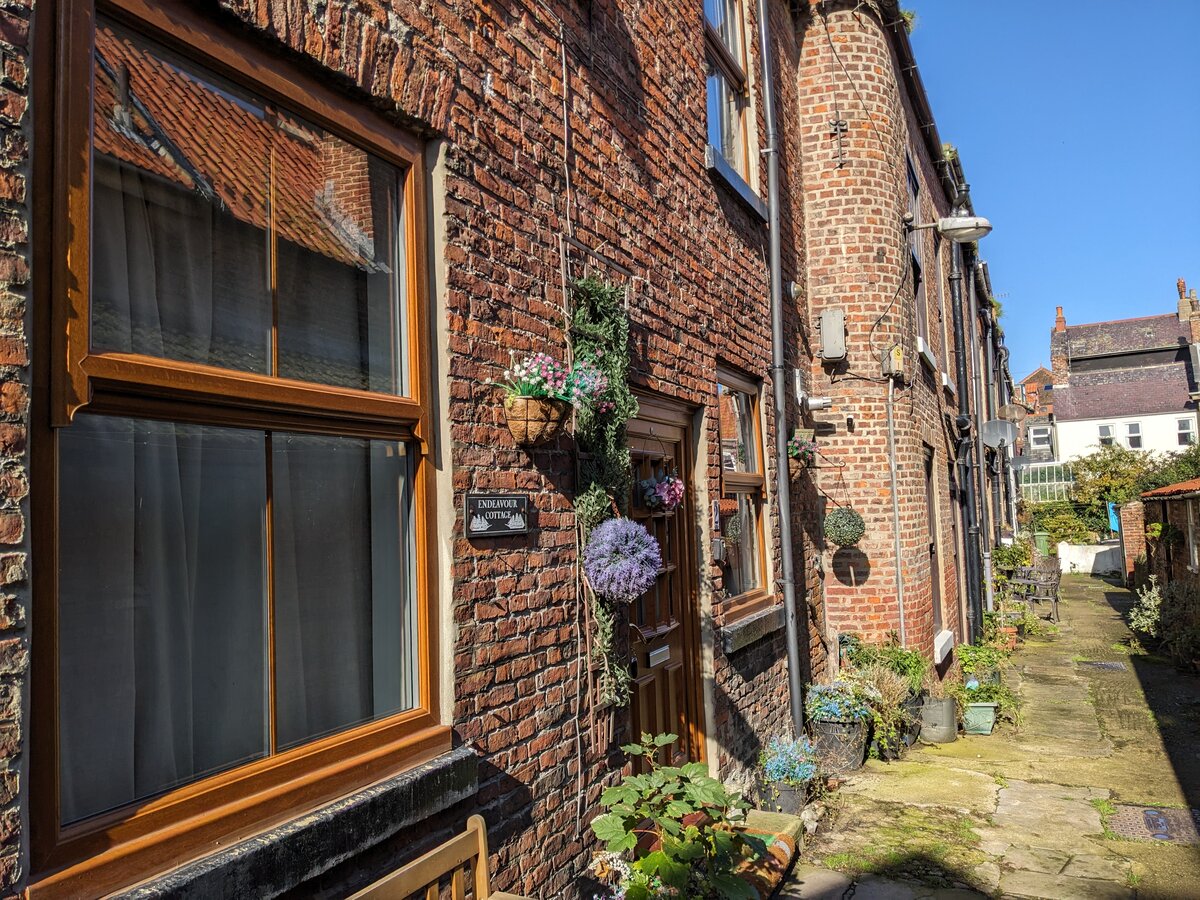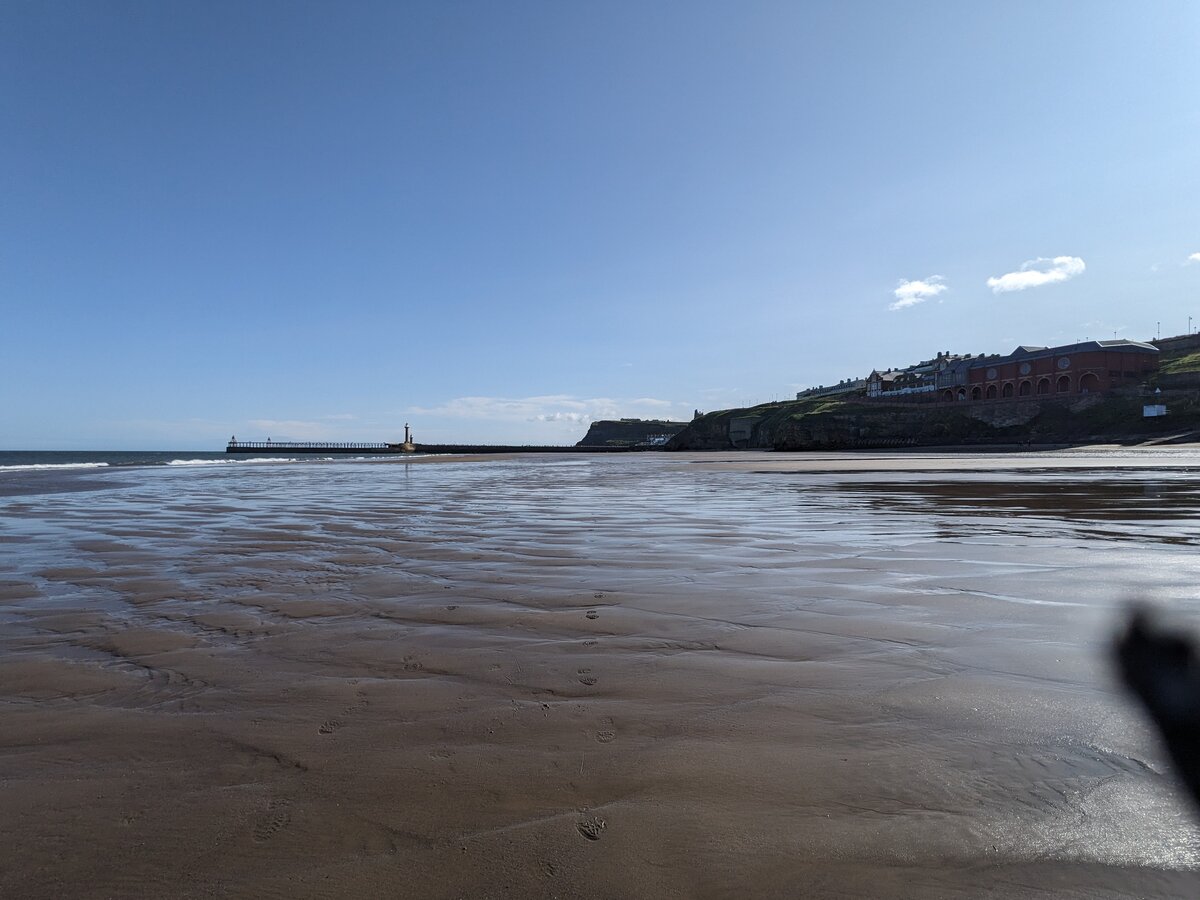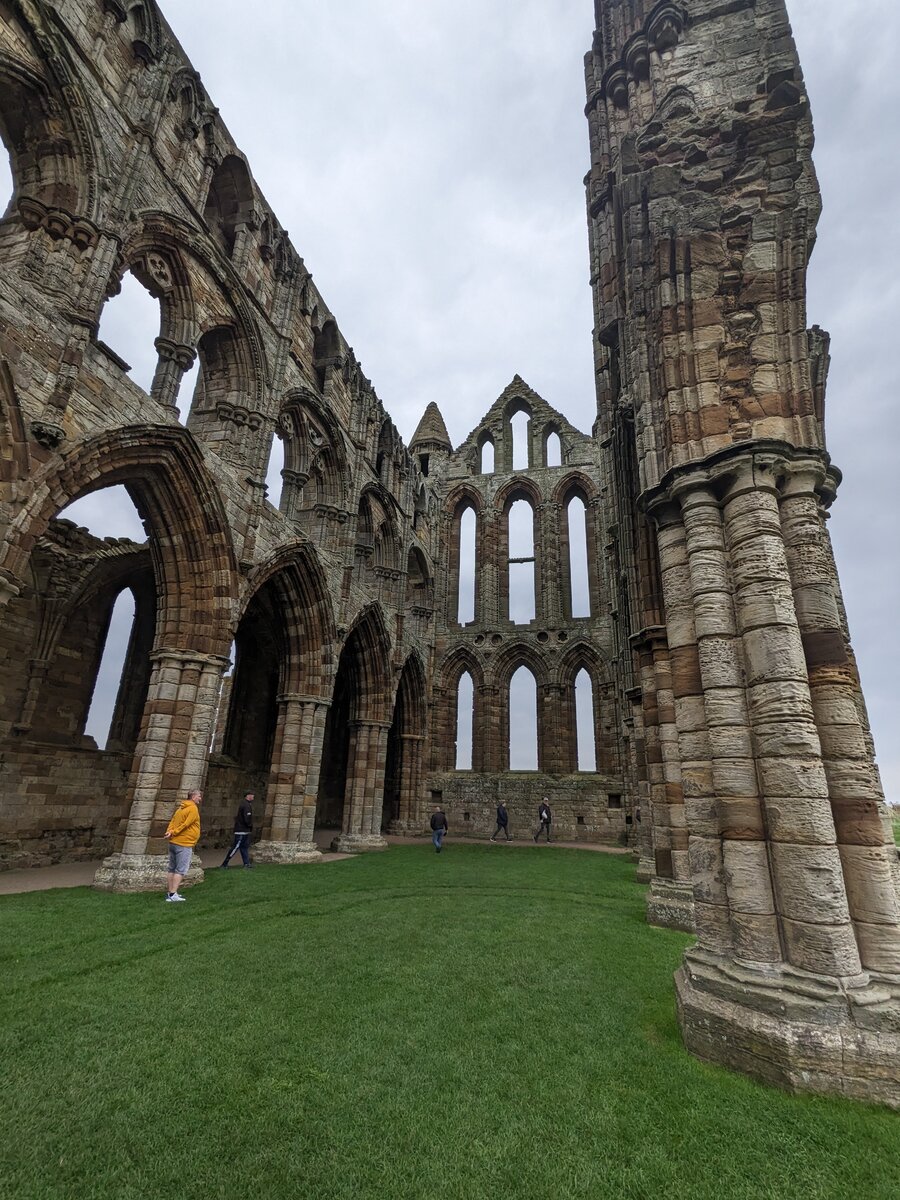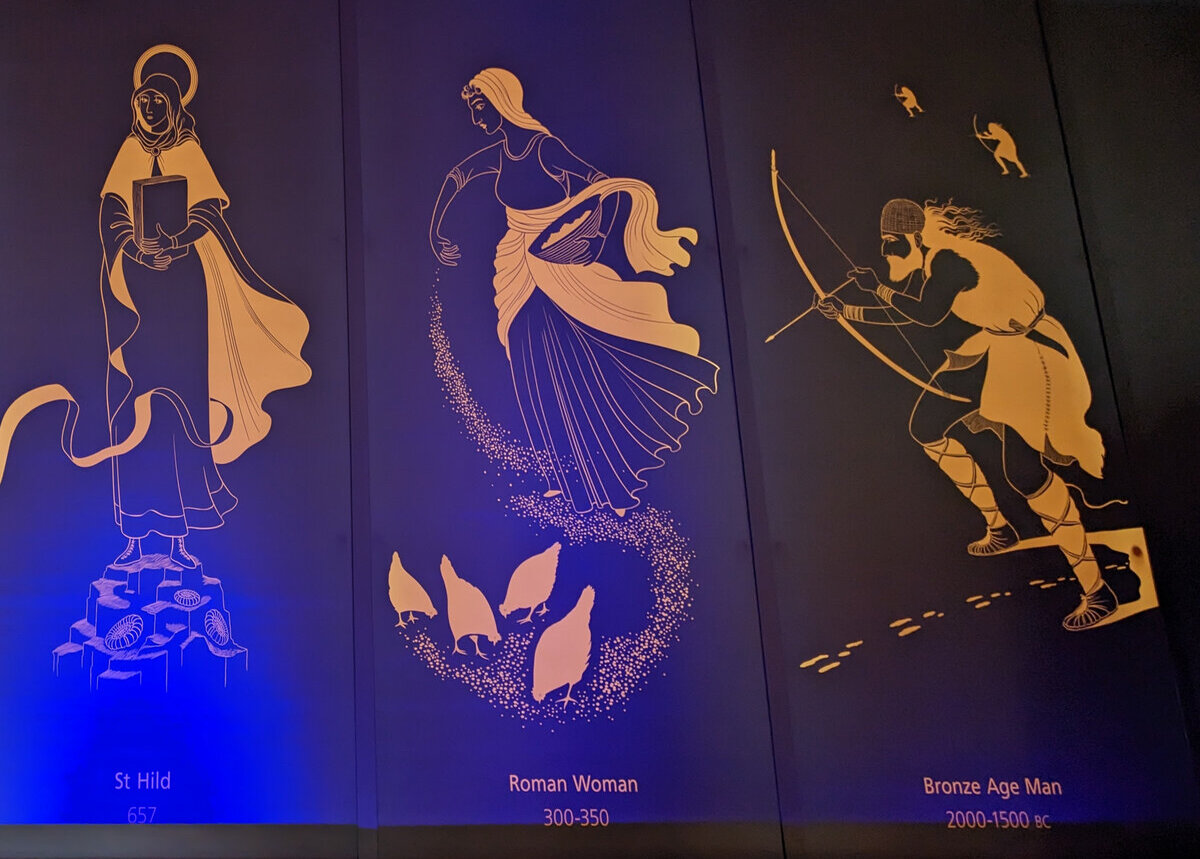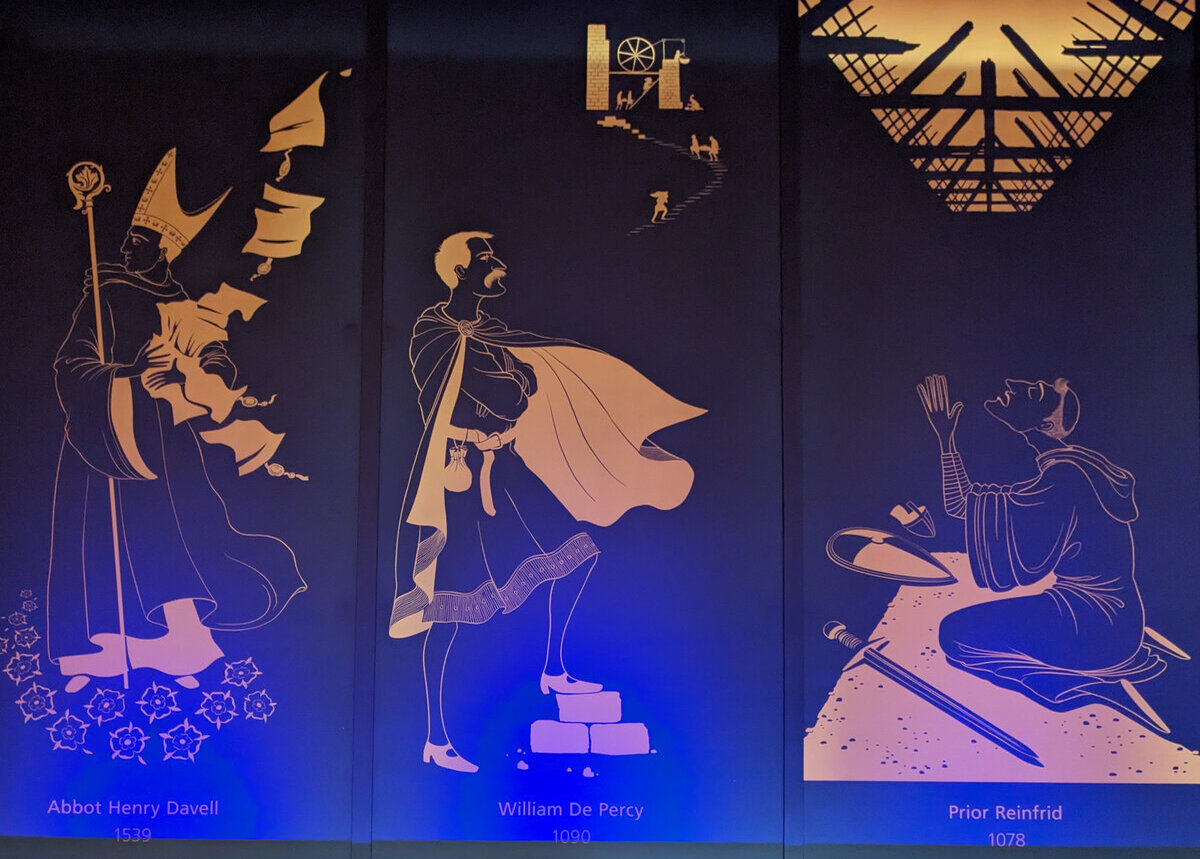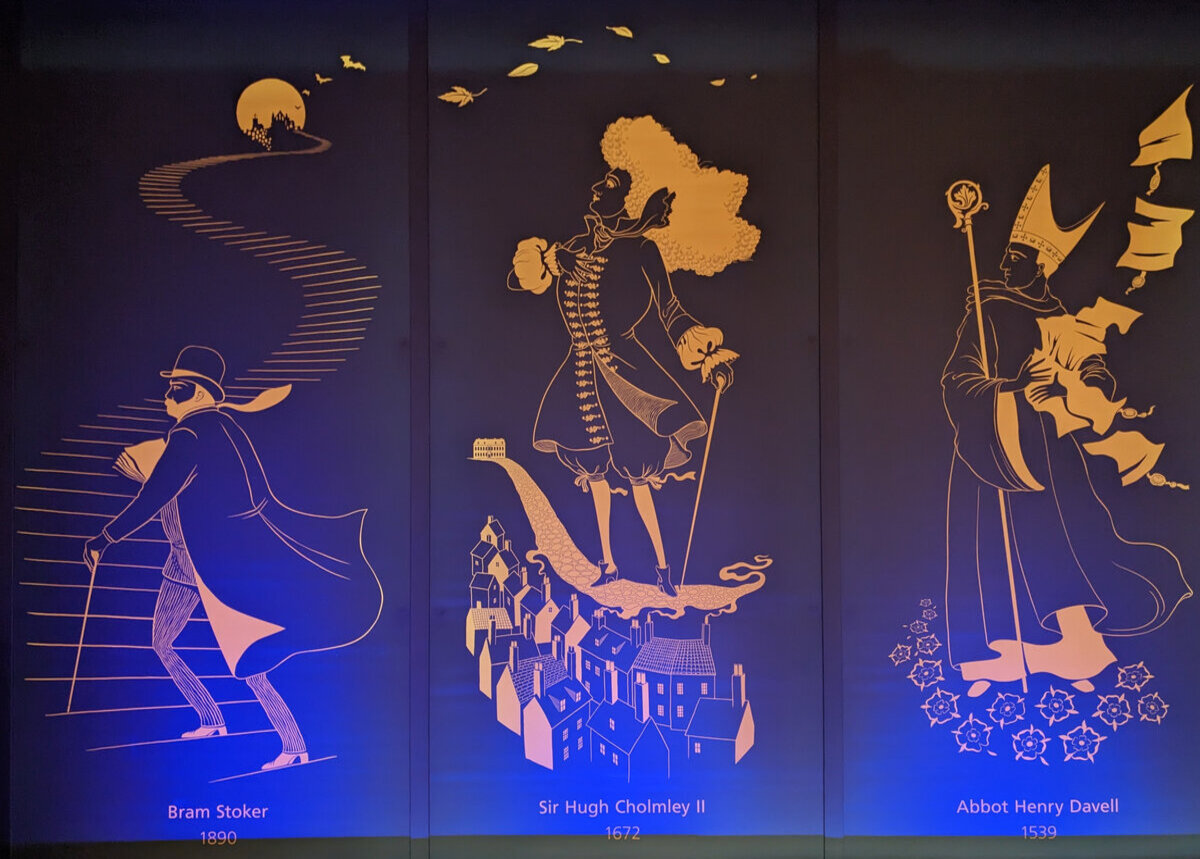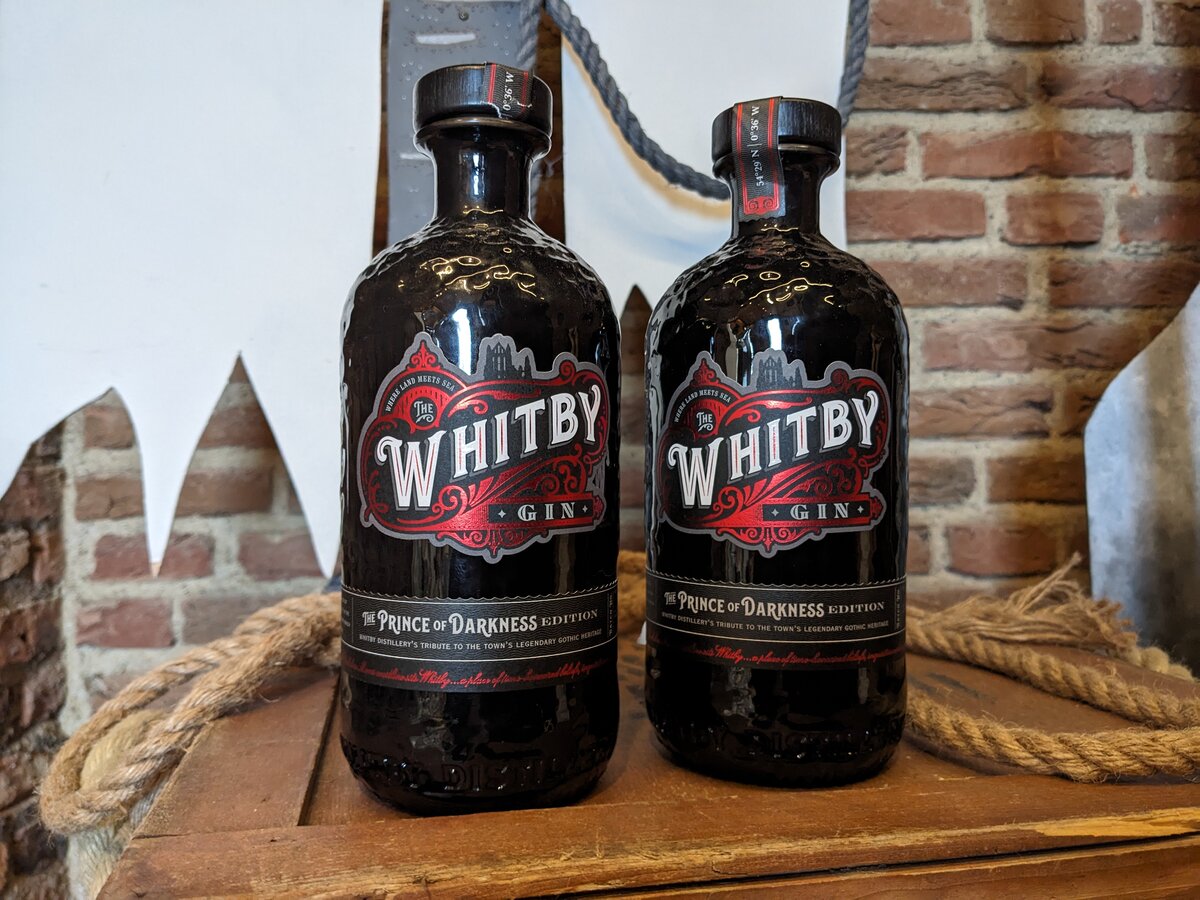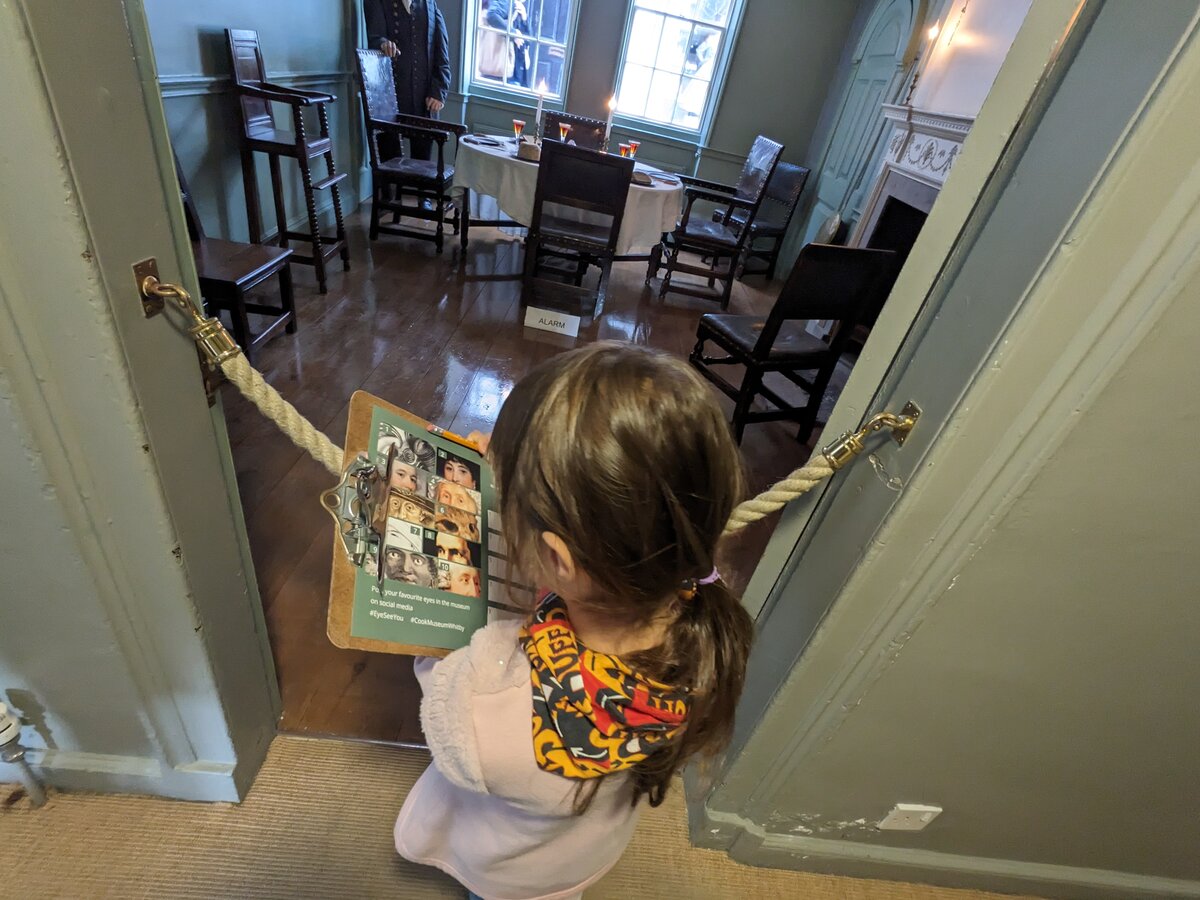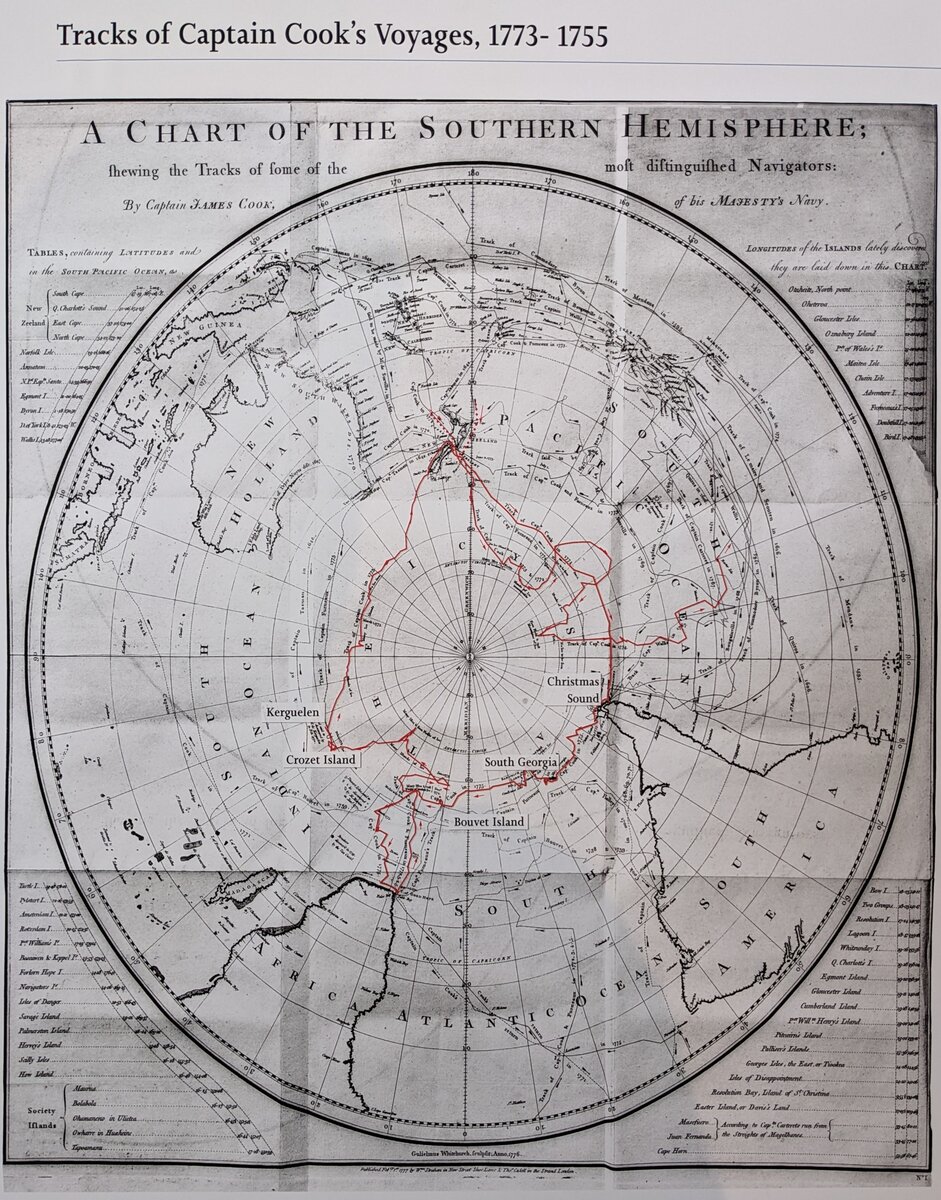Across the beautiful Yorkshire Dales and Moors from Windermere in the West, we came to Whitby on the East coast. Whitby is a popular tourist destination with a notable maritime heritage. We stayed two nights in a pleasant two-up two-down cottage near the top of the town.
Whitby nestles along the mouth of the River Esk and with clear skies the view across the estuary includes the east side of the town, St. Mary’s Church and the remains of Whitby Abbey.
The Abbey is a prominent reminder of Whitby’s long history. Originally founded by Abbess Hild in the year 657, the Abbey went through a period of abandonment in the mid-ninth century. It later became a Benedictine Monastery, until Henry VIII and the dissolution of the monasteries, when it was bought by Sir Richard Cholmley. It’s now managed by English Heritage.
Whitby is featured in Bram Stoker’s 1897 novel Dracula and has inspired many authors. In Stoker’s story Dracula leaves Transylvania, sailing from Vania in Bulgaria. Off Whitby, Dracula leaves the ship in the form of a dog and runs up the 199 steps to the graveyard of St Mary’s Church which is adjacent to Whitby Abbey.
Captain James Cook served his apprenticeship in Whitby. Cook’s first voyage of discovery to the southern hemisphere was from 1768 to 1771 aboard HMS Endeavour. Coincidentally, Endeavour was built in Whitby. Today, the Captain Cook Museum is a trove of maritime history and exploration. The museum provided a sheet of challenges including matching eyes to paintings, which is great to help keep younger children engaged.
Whitby has a huge number of fish and chip shops, however we were very disappointed with the ones we tried. In 14 days and more than 900 miles, the best fish and chips we found was at The Harbour on Marlborough Street in Faringdon, which was delicious.
